Propose, design, and build a physical interface to control
an appropriate output with a focus on urban agriculture
For this project, a partner and I designed a semi-automated hive for new beekeepers to
build skills and community while reconnecting to nature and our food production system.
In collaboration with: Jacob Brennan
Fall 2019
____________
The Process
As a part of this project we were given a hypothetical client, the 'Means of Production Garden' (MOP) located in Vancouver, BC. We had the opportunity to explore the garden and researched the location to gain a better understanding of the context in which we were working in.
Moving onto the ideation process, we came up with a handful of design concepts that could be incorporated into the MOP garden.
After reflecting upon our goals and considering our ideas, we decided to move forward with a semi automated bee hive. A system in which we could integrate the public into community spaces, while also educating them on the vitality of pollinators and the food production system.
↓
Before entirely moving forward with the concept, we produced this concept proposal as a way to flesh out details and to easily communicate the idea to others. Here we worked out the device's relation to the space it would be held in, the infrastructure, and the concept overall.
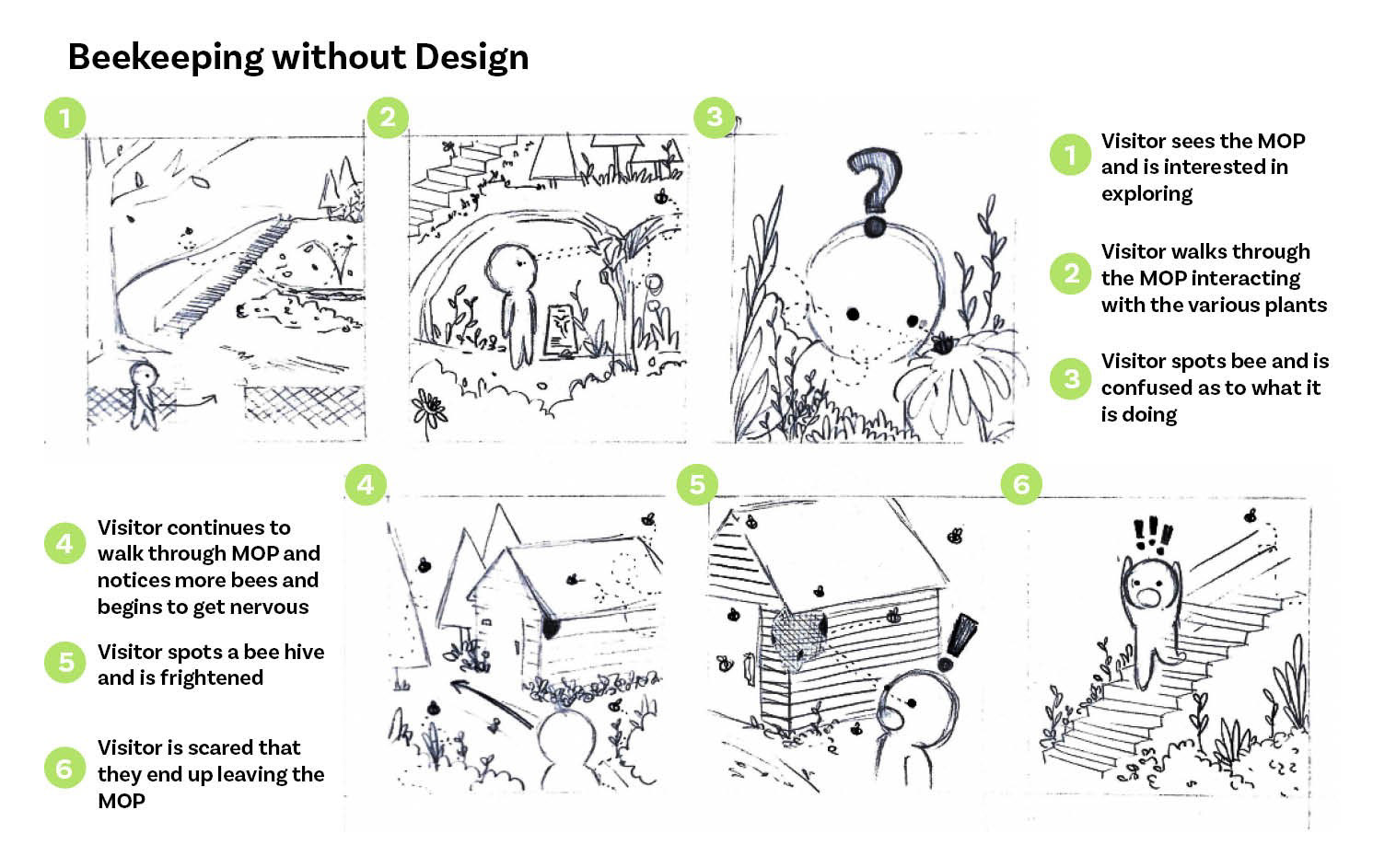

To obtain a better sense of what the implementation of this concept would be, we both created storyboards. My storyboards focused on the concept in general and how it would influence the space. While Jacob focused on the actual use of the device (not displayed here).
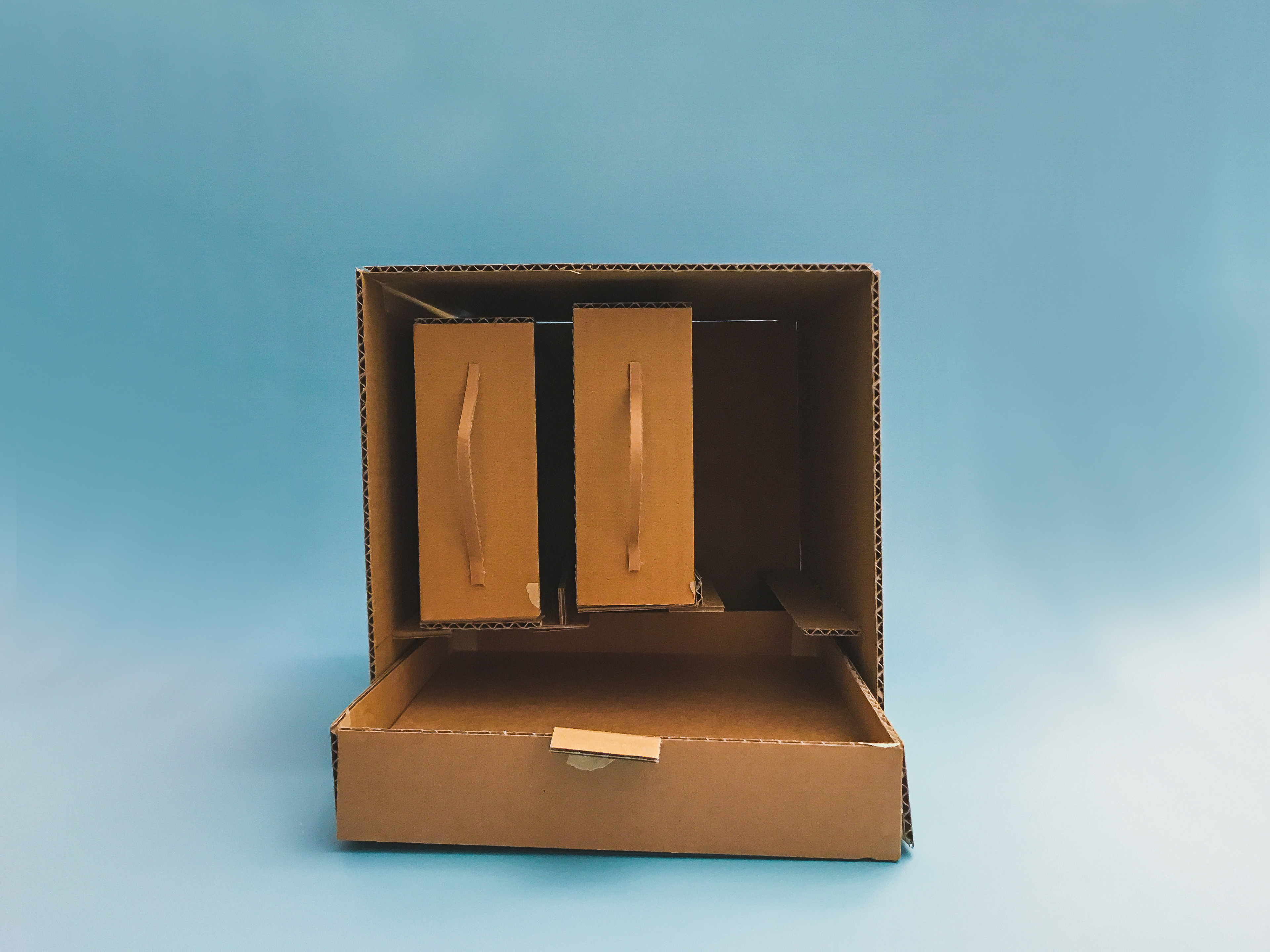

Getting prepared for proxy testing, I designed a cardboard prototype to simulate the use of the device. In addition, I coded a screen that mimicked the backing of the device, which displayed bees that would 'react' to smoke input at the click of a mouse. While I did this, Jacob created a persona and put together the Arduino components for the smoke input.
↓
Through our proxy testing we gained major insights. A lot of the users struggled with starting the device due to poor button placement, there was a need for explicit instructions as users were afraid to make a mistake, and a desire for certainty in the security of the hive.

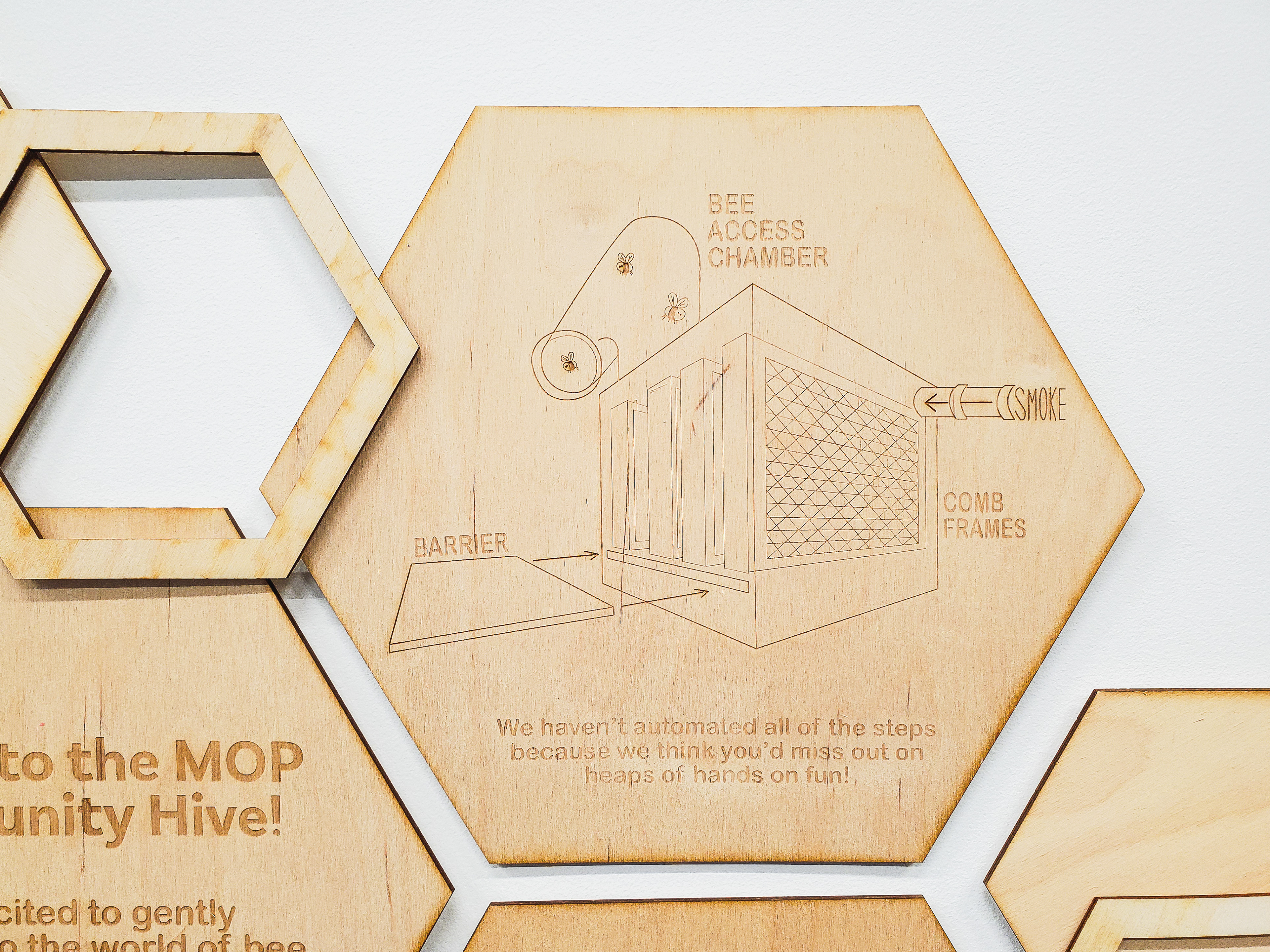

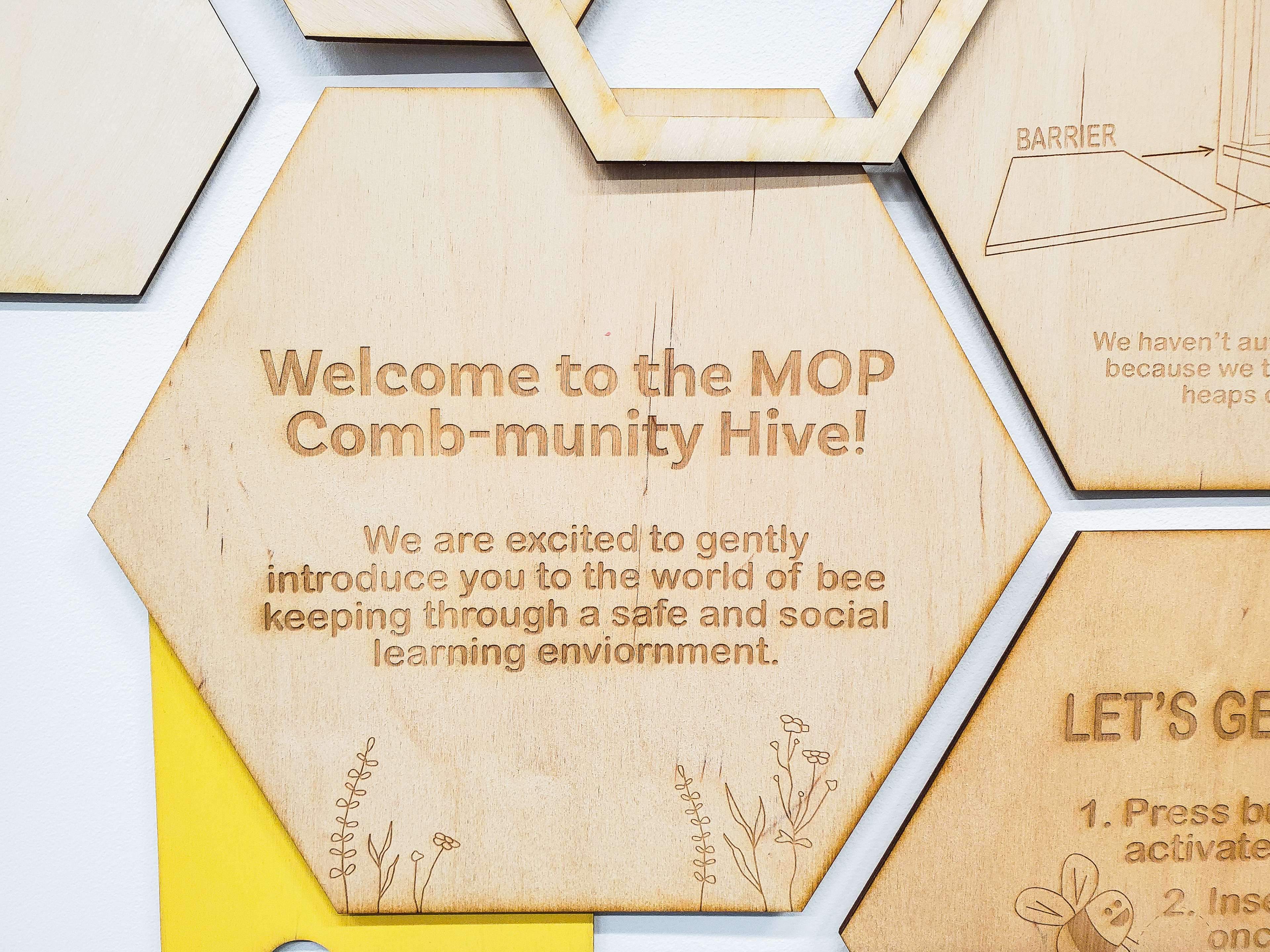



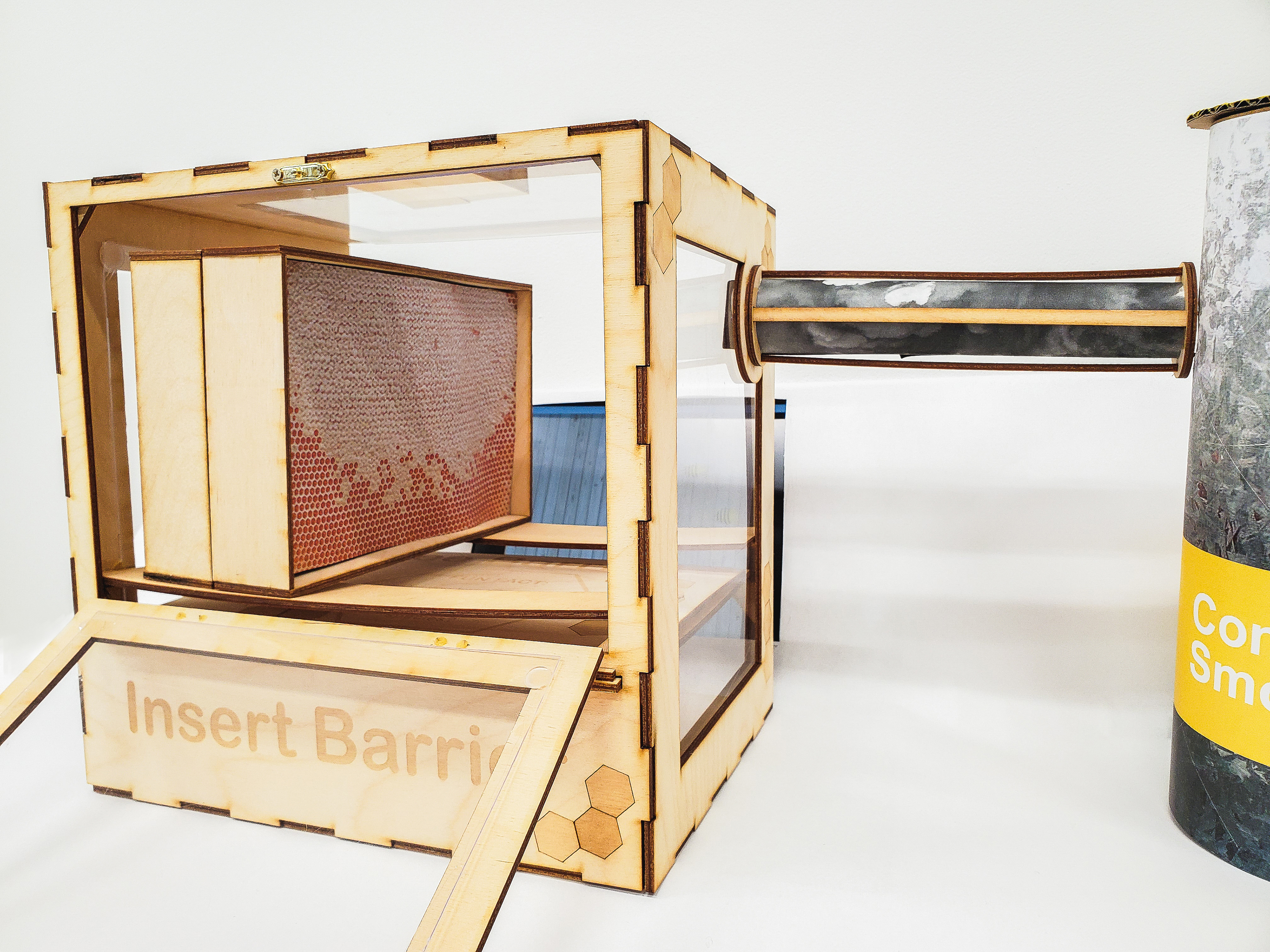
After revisions to our prototype based on proxy test insights, we were ready to start our final prototype. We laser cut instructions, info and our hive, onto and out of recycled wood to maintain the MOP garden's aesthetic and sustainable practices. We incorporated an Arduino fan connected to my code for a bee simulation and added fun facts throughout the wooden panels.
The final prototype was fully functioning and a product of team effort. Our focus for this aspect of the project was the smoke delivery system as a step in our overarching idea to bring community members into the world of beekeeping and to the MOP.
_______
The Comb-unity Hive
